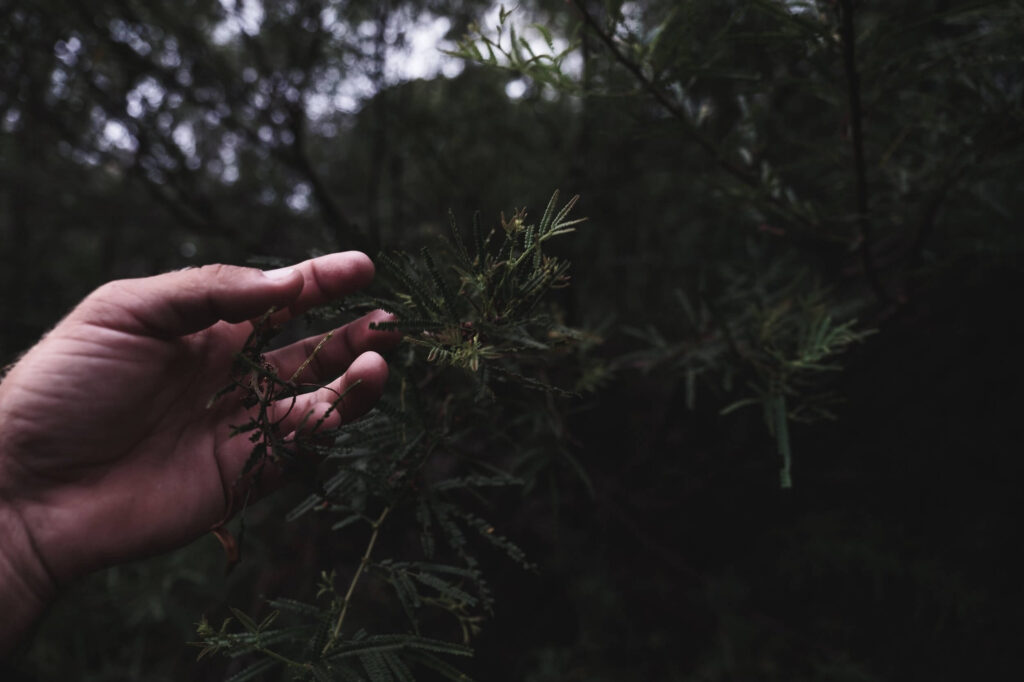By 2050, projections suggest that over two-thirds of the world population will live in cities. Many aspects of urban living and modern technology contribute to our levels of stress and a number of pathologies. Thanks to the pandemic, people are spending most of their time indoors. “Nature-deficit disorder is not a medical diagnosis, but a useful metaphor to describe what many of us believe are the human costs of alienation from nature: diminished use of the senses, attention difficulties, higher rates of physical and emotional illnesses, a rising rate of myopia, child and adult obesity, vitamin D deficiency, and other maladies,” says Richard Louv, author of ‘Last Child in the Woods: Saving Our Children From Nature-Deficit Disorder.’

Forest bathing, the Japanese way to combat stress, is gaining traction. It is a term used to describe time spent in nature, particularly forests, that can have a positive impact on physical and mental health. Its benefits are being increasingly upheld by science.
Highlights
- Forest bathing is a mindfulness and fitness therapy that involves trainer led leisurely walks in a forest to absorb its atmosphere and develop a connection with nature,
- The process involves leaving behind phones and other devices and walking through the forest aimlessly, engaging the senses and trying to savour the sounds, smells and sights all around,
- Forest bathing is known to have multiple benefits such as improved mood, reduced stress, positive impacts on cardiovascular health and mental health.
What is forest bathing?
Forest bathing, also known as forest therapy, is a fitness and mindfulness practice that involves going for a leisurely walk in a forest specifically to take in its atmosphere. In Japan, over 30 years ago, the Department of Parks and Agriculture defined the concept of shinrin yoku as ‘taking in the forest’. The practice was established there as a form of relaxation and de-stressing. The modern variation of forest bathing assumes various forms around the world.
The process is usually led by a trained/certified guide and designed to enhance relaxation, reduce stress and increase your connection with nature. There is growing scientific evidence that interacting with nature is good for mental and physical health, particularly in Japan and Korea, where such practices have been studied for years.
The process of forest bathing
First, you have to find a place, ideally a forest or nature reserve, although in cities this can be replaced with a park. It is important to leave your phone or any other devices behind and walk aimlessly through the forest, slowly taking in everything around you. Similar to practises like meditation, it is important to engage your senses, trying to savour the sounds, smells and sights around you—to literally let the forest in.
Listen to the birds and insects, feel the breeze, look at the leaves and the trees and smell the flowers, fruits and other earthy fragrances around you. Taking deep breaths to enjoy the freshness of the air, placing your hands on the trunk of a tree or dipping your fingers into a stream—all of these are important parts of forming a connection with the natural world around you.
For people coming from a busy urban setting, it can be hard to slow down at first. Trained forest therapists help you feel comfortable and offer tips and exercises while walking through the forest with you. When it comes to relaxing and releasing stress, there is no magical solution—it varies from person to person, and a good forest therapist can help you find the best ways that suit you. Some tune into the sounds of the forest, while others may enjoy a meditation session, a leisurely walk or other techniques like breathing exercises, aromatherapy or plant observation.
The goal of the entire process is to slow down, immerse yourself in the natural environment and establish a connection with your surroundings.

Benefits of forest bathing
A passage from ‘Shinrin-Yoku: The Art and Science of Forest Bathing’ by Dr Qing Li. shines a light on its inherent power:
‘Involuntary attention requires no mental effort, it just comes naturally. This is the kind of attention we use when we are in nature. The soothing sights and sounds give our mental resources a break. They allow our minds to wander and to reflect, and so restore our capacity to think more clearly.’
A growing body of evidence suggests that forest bathing has a variety of health benefits.
- It improves mood and reduces stress: A review of over thirty studies showed that forest bathing tends to lower cortisol levels more than other activities or walking environments it was compared to. Cortisol is a hormone that is elevated during stressful situations. Another study from 2011 compared the effects of walking in a city to forest bathing and found that with the same level of activity, there was a far more significant reduction in the levels of stress hormones. Even in terms of self-reported mood improvement and attention scores, just thirty minutes of forest bathing was seen to have a positive effect.
- It can lower blood pressure and improve cardiovascular health: Another benefit of forest bathing is its effect on blood pressure and cardiovascular health. Studies have found that forest bathing can lead to lower blood pressure levels. In one study, forest walkers of various ages had a reduction in their systolic blood pressure or blood pressure during heartbeats (from 141 mmHg to 134 mmHg). A reason for this could be the stimulation of the parasympathetic nervous system that activates the rest and digest mode. It leads to a reduction in blood pressure levels.
- It can lower inflammation: Another potential reason for lowered stress levels and blood pressure could be phytoncides. Phytoncides are volatile organic compounds with antibacterial properties emitted by trees. A Japanese study from 2009 found that inhaling phytoncides lowered concentrations of stress hormones and inflammation, and also enhanced the activity of white blood cells, boosting immunity in both men and women. In addition, these cells have also been linked to fighting cancer.
- It can improve mental health: Research suggests that forest bathing can reduce anxiety. The authors of a 2017 review found that “forest therapy is an emerging and effective intervention for decreasing adults’ depression levels.” Other studies have investigated the hypothesis that forest bathing might also be a preventative step for certain mental health issues, as well as lung and heart diseases.
- It could lower blood sugar levels: Studies examining the impact of forest bathing on the blood glucose levels of diabetics have shown that it reduces blood sugar after repeated sessions. This is not just a function of walking in the forest, but also presumed to be linked to the fact that the forest environment causes changes in hormonal secretion, autonomic nervous functions and could even improve insulin sensitivity.
Because there are relatively few high-quality studies done on forest bathing, there is still scepticism about some of these claims. For instance, in some studies, scientists found that cortisol levels dropped even before the actual practice of forest bathing when subjects had only been told about the activity. This suggests that there could be a degree of placebo effect at play. Another hypothesis is that it is not the forest itself that leads to the drop in stress levels, but rather the absence of urban environments that tend to be more noisy, crowded and often trigger stress responses. The argument is that removing the many reminders of stress you are faced with within an urban or even suburban environment could be the actual reason for stress reduction. Forest bathing, however, remains worthy of further research. After all, there is no harm in taking a walk in the woods!
Guidelines for practice
Although initial forest bathing trips are better with a guide who can help participants to fully relax and notice the sights, sounds and smells around them, it is just as easy to do by yourself. There are a number of activities that can help you to spend more time in a forest and connect with nature—from walking to aromatherapy to a picnic in the forest to meditation and breathing exercises. Another great benefit of shinrin yoku is that it is suitable for people at any level of fitness and doesn’t have any strict requirements.
People who live in more urban environments often are unable to access a ‘proper’ forest. However, forest guides and experts say that this practice can have many of the same benefits regardless of the location, as long as there are trees and the same spirit of mindfulness and observation. Once you’ve learned to do it, rain or shine, you can go forest bathing in a quiet park, a small garden, an arboretum or any green area on the outskirts of your city, even if access to wilderness is not as convenient.
Conclusion
All in all, forest bathing, or shinrin yoku, is a practice that has a wide variety of mental and physiological health benefits. It can serve as an antidote to the nature deficit disorder that we seem to be increasingly afflicted with. As long as you remember to stay mindful, involve all your senses and enjoy the time you spend in the forest, it will be an experience that can lead to many positives. Although it is being researched more intensively, the science also suggests that this simple practice can help in reducing stress. There is also evidence that forest bathing can reduce depression and anxiety levels, lessen blood sugar, blood pressure and inflammation.
Disclaimer: The contents of this article are for general information and educational purposes only. It neither provides any medical advice nor intends to substitute professional medical opinion on the treatment, diagnosis, prevention or alleviation of any disease, disorder or disability. Always consult with your doctor or qualified healthcare professional about your health condition and/or concerns and before undertaking a new healthcare regimen including making any dietary or lifestyle changes.
References
- https://www.un.org/development/desa/en/news/population/2018-revision-of-world-urbanization-prospects.html
- https://time.com/5259602/japanese-forest-bathing/
- https://www.ncbi.nlm.nih.gov/pmc/articles/PMC5369157/
- https://link.springer.com/article/10.1007/s00484-019-01717-x
- https://pubmed.ncbi.nlm.nih.gov/21291246/







